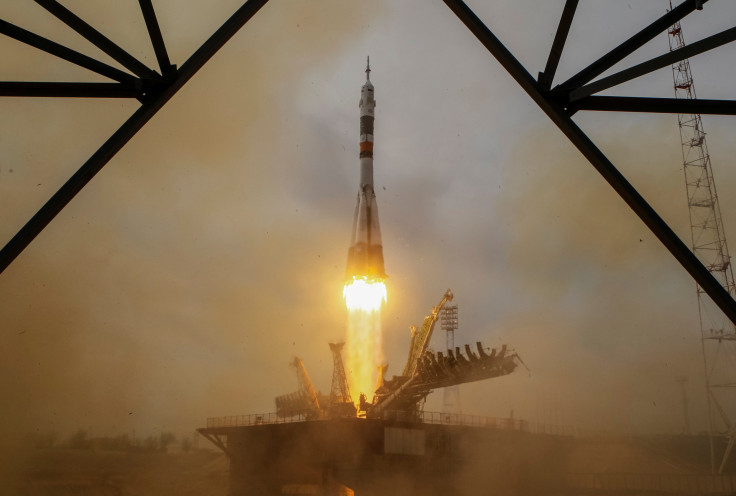Robots In Space? Unmanned Russia Missions To The International Space Station Would Cut Costs

This article originally appeared on the Motley Fool.
Russia is forging a new era in space.
Ever since the United States retired its space shuttle fleet in 2011, NASA astronauts have had to hitch rides to the International Space Station (ISS) in Russian Soyuz spaceships -- paying Russian space agency Roscosmos for the privilege. The plan is for NASA to soon switch over sometime soon to using its own rockets -- built by SpaceX and Boeing (NYSE:BA) and Lockheed Martin's (NYSE:LMT) United Launch Alliance joint venture -- but it remains an open question when these companies will have their spacecraft ready for use.
In the meantime, American astronauts must continue to fork over $82 million a seat in payment for rides aboard Soyuz. And what is Russia doing with all that money, you ask?
It's using it to develop a new spaceship of its own -- a very interesting spaceship.
Going where no cosmonaut has gone before -- on Russia's Federatsiya
Roscosmos is currently developing a new and improved spacecraft -- one capable not just of ferrying supplies and astronauts to ISS, but also of fulfilling Russia's dream of one day landing a cosmonaut on the moon, or even Mars.
In a move evocative of both Star Trek and Russia's own official name -- "the Russian Federation" -- it's calling the new spacecraft Federatsiya, or "Federation." (Side note: The current Soyuz spacecraft design was named for the Soviet Union, or Sovyetsky Soyuz). Now here's what we know about the spaceship that will replace the Soyuz.
Energia, a publicly traded Russian "rocket and space public corporation," has been working on developing the Federatsiya for more than a decade. According to new reports, completing the effort will require another five years and cost a further $734 million. In a break from tradition, the Soyuz rocket-Soyuz capsule combination of current spaceships will be replaced by the Federatsiya capsule being carried atop a new heavy-lift rocket called Angara. Another change -- instead of launching from the Baikonur Cosmodrome in Kazakhstan, Angara and Federatsiya will launch out of Roscosmos's new seven-launchpad spaceport in Russia's Amur Oblast, dubbed the "Vostochny Cosmodrome" (the "Eastern Spaceport").
The new Federatsiya capsule will stand 20 feet tall and weigh 14.4 metric tons. Larger than its predecessor Soyuz, Federatsiya will accommodate between four and six cosmonauts.
Plans are for Federatsiya to make its first trip to space in 2021, unmanned. Crewed missions are expected to begin as early as 2023, and Russia plans to conduct a manned moon mission with Federatsiya as early as 2025.
No crew, but...
Now here's where this story gets weird. Federatsiya's first trip to space in 2021 may be unmanned, but Russia's new spaceship won't be going into space entirely uncrewed. To the contrary, the spacecraft will carry a pilot -- a robot pilot.
According to Russian news agency TASS, Russia plans to crew Federatsiya's first mission with a humanoid robot named FEDOR (short for "Final Experimental Demonstration Object Research") at the helm. FEDOR will be the sole passenger aboard Federatsiya's maiden flight. TASS reports that FEDOR is capable of screwing in a light bulb, unlocking and opening a door, and driving a car -- and apparently, a spacecraft, too.
Developed by Russia's Android Technics Research and Production Association under contract to the country's Emergencies Ministry, FEDOR was designed to perform work "in extreme conditions." To accomplish its missions, FEDOR has been equipped with both "fine motor skills and decision-making algorithms." Russia plans to test that thesis by giving FEDOR control over Federatsiya.
What comes next?
That's already pretty amazing. Not only is Russia developing a new spaceship, but it's developing an entirely new way to crew spaceships, too.
What could be even more interesting is what Russia plans to do next. For example, FEDOR doesn't need to breathe, and he won't require a spacesuit -- so might Russia also decide to send FEDOR out through the hatch on an extra-vehicular activity mission? A few years from now, could we see FEDOR, or multiple FEDORs, land on and explore the moon itself, no cosmonauts required?
The upshot of all this, of course, is that Russia appears set on blazing new trails in space -- even as NASA under the Trump administration endures small but significant budget cuts. Adding insult to injury, Russia is doing all this on our dime -- and will continue to do so until SpaceX, Boeing, and Lockheed get their act together and begin launching their space shuttle replacements.
Only then will NASA be able to stop paying Roscosmos for astronaut rides and begin spending that money on developing our own space program again.
Rich Smith has no position in any stocks mentioned. The Motley Fool has no position in any of the stocks mentioned. The Motley Fool has a disclosure policy.



















